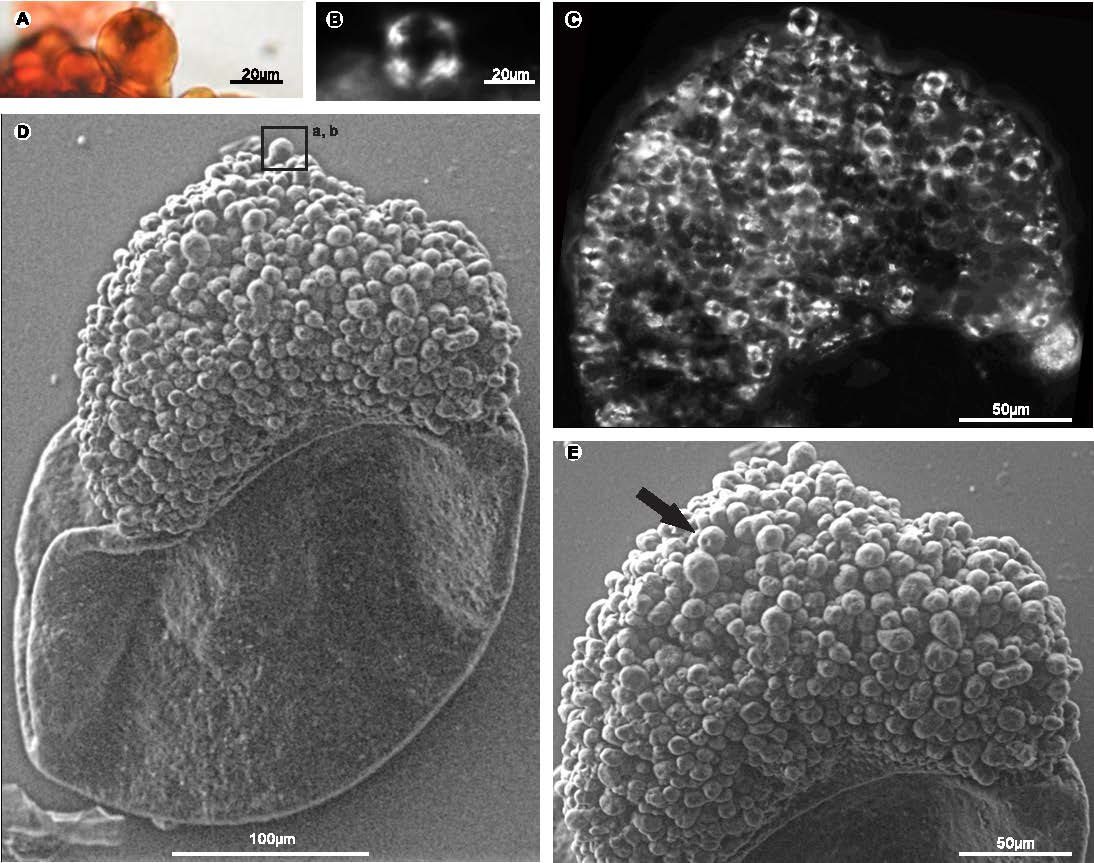Life
It Turns Out "Carbo-Loading" Has Been A Thing For Over 280 Million Years

Many people have a pre-workout routine they swear helps with their performance. If yours includes carbo-loading, it would appear you have something in common with your ancient ancestors (your really, really ancient ancestors). Chinese and German scientists have discovered the oldest ever evidence of fossilized starch in samples of coal that date back to the Permian age (299 to 251 million years ago) in Northern China — samples that demonstrate that the concept of "carbo-loading" has been around for 280 million years, even if you think you invented it Friday nights in college.
Researchers from the Nanjing Institute of Geology and Paleontology found granulated deposits of starch, bearing a similar appearance to popcorn or pebbles, on the megaspores (large reproductive cells) of a preserved sample of an archaic plant called the lycopsid— an ancestor of many modern varieties of mosses. The details of this discovery also leads researchers to believe the sample is one of the planet's earliest examples of energy-laden nourishment; providing food and fuel of sorts to some of the earth's earliest inhabitants.
Before you can fully grasp the weight of this discovery, there are some central components we should break down first.
"Starch" is a word thrown around a lot in the nutrition world, but to define the material as purely something to be consumed is wholly inaccurate. Starch is, according to The European Starch Industry Association, "...a carbohydrate extracted from agricultural raw materials which is widely present in literally thousands of everyday food and non-food applications." As a naturally occurring material, it is renewable and biodegradable, and is capable of serving as a "...substitute for many fossil-fuel components in... chemical applications such as plastics, detergents, [and] glues." Starch is the basis of many paper products, as well as construction materials and adhesive substances (i.e. glue).

Starchy vegetables like potatoes and corn contain higher levels of carbohydrates; necessary for helping the body function and providing it with energy. Plant seeds use starch similarly, by storing the material internally to nourish seeds. So when evidence of ancient starch was first uncovered by researchers, they assumed this was the role it was serving — nourishing seedlings inside the plant's megaspore. It was upon further examination they discovered the starch caps were exclusively present outside of the megaspore. A seemingly minor detail, the placement is actually indicative of something much more significant. Rather than using the starch for its own nutrition, the starch was most likely used as a means of spreading spores through other creatures' consumption. Chief researcher Liu Feng, an associate professor at the Nanjing University of Geology and Paleontology explains, "We suggest that these starch caps were used to attract and reward animals for megaspore dispersal."
A caveat here is that all birds and mammals, as well as many varieties of insects, were not yet walking the earth during the Permian era. So who was snacking on the starch (and, in turn, dispersing it around in more areas?). Scientists' best guess is snails and arthropods like millipedes and roaches.
The biggest takeaway from this study is not the presence of starch during an ancient time period; that has been known for a while. Rather, it provides new insight into the interactions between fauna and animals of which there is not a lot known. Dr. Feng is optimistic the new discovery can, "... help us better understand the terrestrial animal food habit and the complexity of biotic interactions in deep geological time." Plus, this solidifies the fact that humans are far from the first beings to discover how beneficial carbs are to energy levels and performance (or to use it as an excuse to pull a Liz Lemon and "shotgun" a pizza).
So the next time you are about go for a run or even just need a little extra energy to fuel your day, go ahead and channel your inner Lemon — it has worked for hundreds of millions of years.